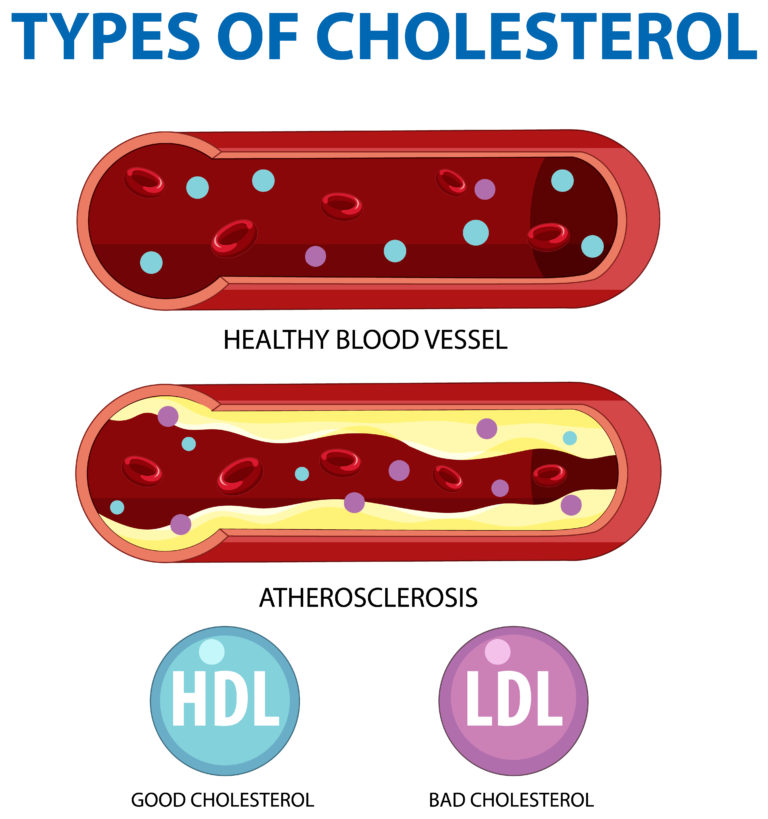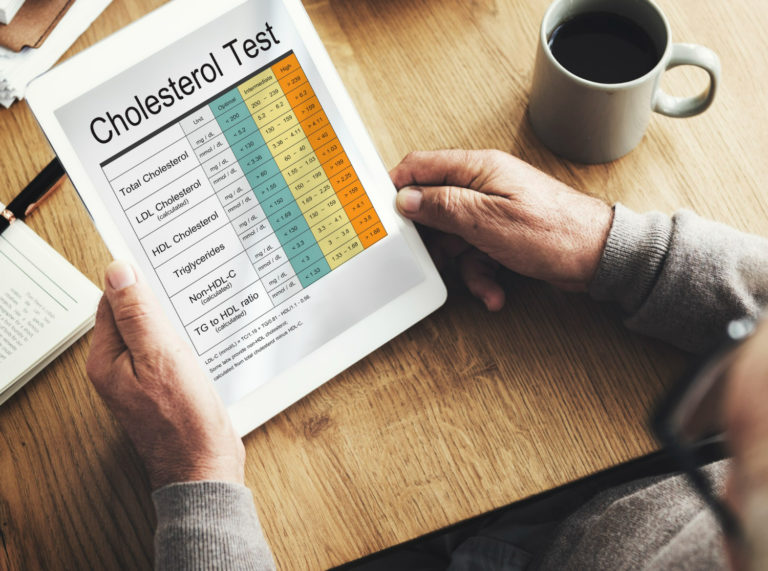What is lipid profile panel?
Lipids and cholesterole are fat-suchlike substances in your body. A cholesterol (or lipid profile) test detect the levels of cholesterol and other fats in your blood.
Healthcare providers use lipid panels to help assess someone’s cardiovascular health by analyzing cholesterol in their blood and to help diagnose other health conditions.
What are the 3 tests of lipid profile panel?
A lipid profile panel test measures:
- HDL-cholesterol (high-density cholesterol, called ‘good cholesterol’)
HDL cholesterol is good cholesterol, it removes excess cholesterol from your body. - LDL-cholesterol (low-density cholesterol, called ‘bad’ cholesterol)
LDL cholesterol is referred to as bad cholesterol as it can build up in the walls of your blood vessels.
This increases your risk of heart diseases and atherosclerosis. - triglycerides (TG, another type of fat in the body)
High triglyceride levels can also increase risk of cardiovascular (heart and blood vessel) disease.
What is the normal range of lipid profile panel test?
Ideal results Trusted Source for most adults are as follows:
- LDL: less than 100 mg/dL
- HDL: 40 to 60 mg/dL (higher number is better)
- Triglycerides: less than 150 mg/dL
Why do I need a lipid profile panel test?
High cholesterol levels do not often cause any visible symptoms. Thus, physicians use the lipid profile panel to monitor the lipid levels in the blood and detect elevated levels early on before they adversely affect cardiovascular health. The lipid profile panel is also used to:
- Diagnose other conditions such as fatty liver or pancreatitis.
- Monitor the effectiveness of cholesterol-lowering medications if you are already on treatment for high cholesterol.
- Monitor the progression of hyperlipidemia if you had abnormal lipid profile tests previously.
Who needs to have a lipid profile panel test?
You should have a lipid profile test if:
- You are a male over the age of 45 or a female over the age of 50.
- You are a smoker.
- You are obese.
- You have hypertension or diabetes.
- you don’t have enough physical activity.
- you have kidney disease.
- You have an immediate family member with a history of heart disease at a young age (below 55 years for males and below 65 years for females).
Children can also have high cholesterol levels due to genetic reasons or obesity.
Guidelines suggested that males in the age range of 45–65 years and women in the age range of 55–65 years should have a lipid panel test every 1–2 years and every year after the age of 65.
What to do if the results of the test are abnormal?
High cholesterol levels can be treated with lifestyle changes and medication. Lowering your LDL may help reduce your risk of heart conditions and other related issues.
To help lower your bad cholesterol levels:
- If you smoke, consider quitting
- Eat a balanced diet.
- Avoid trans fats
- Exercise regularly
- Maintain a moderate weight
- Starting a cholesterol-lowering medication.






